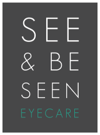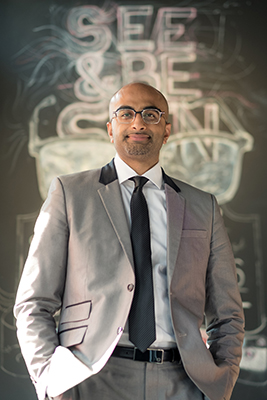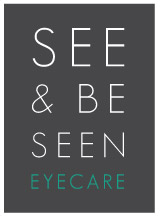
How Your Eyes Depend on Your Cornea
The way an eye works is by taking in visual data made up of light and shadows into the cornea. The cornea refracts (bends) this visual data through the pupil (the opening of the eye, through the interior of the eyeball).
The image projects onto the back of the eye, an area called the retina. The retina sends this information to the optic nerve, which in turn sends this information to the brain for interpretation. Change in the shape of the cornea affects the way the cornea bends light into the eye. Rather than bending the light so that it focuses on the retina, the focal point falls short, so the image ends up appearing blurred.
Cameras work in the same way (except the visual data made an imprint on film instead of a retina, before the age of digital cameras). The cornea acts like the outer lens of the camera and needs to be shaped correctly to provide the brain with undistorted visual information. As such, a properly shaped cornea is vital for clear vision.
Our corneas bend and flex whenever we shift our gaze, but they can’t always do so in a way that provides clear vision. Ortho-K lenses are designed to temporarily reshape the cornea overnight, providing the wearer with clear vision the next day without the need for glasses or contact lenses.
What is Ortho-K?
Ortho-K (short for orthokeratology, and it works by reshaping the cornea. Ortho-K involves taking a cast-mould of the cornea on your eyes and making custom-fitted contacts that slowly reshape your corneas as you sleep.
Getting Ortho-K treatment begins with determining that you have healthy eyes since reshaping the cornea won’t solve pre-existing conditions such as glaucoma or cataracts.
As such, it is vital that your eye’s lens, iris, retina, and optic nerve are all in good working order since complications from improper Ortho-K Lens care could add to existing problems.
After an optometrist confirms that your eyes are healthy and you don’t have any conditions that could compromise your treatment, your optometrist can use corneal topography to determine the “lay of the land” concerning your cornea’s irregular shape. Refractive errors such as myopia and astigmatism can all be mitigated using ortho-k lenses.
High-quality topographical information will allow your optometrist to create a gradual reshaping plan designed to correct your refractive error. This information is used to cast a series of models of your cornea, which will be used to shape your custom contact lenses.

How Ortho-K Started
In the 1960s, doctors noticed the subtle reshaping effect that hard corrective lenses had on corneas. For patients with astigmatism, wearing hard corrective lenses could correct the cornea in the short term, and they continued to enjoy clear vision once the lenses were removed. However, the change was not permanent, and the wearer’s vision would slowly worsen again unless the contacts were worn again.
Over the next decade, these doctors would develop orthokeratology, to harness this phenomenon. Ortho-K treatment can now attain in one week what used to take 18 months.
One thing to note is our eyes need to breathe. Since the cornea has to be totally transparent and clear to refract images into your eye, a lack of oxygen can compromise the health and integrity within the cornea, leading to an obstruction of our vision. The body addresses this issue by using tears to take oxygen from the air and diffuse or spread oxygen over the cornea to keep it from drying out. The original hard contact lenses prevented oxygen from reaching the cornea, which is why all hard contact lenses today (including Ortho-K lenses) are made using a rigid, gas-permeable material.
Ortho-K Lens Care
Now that you’ve got a set of cast-moulded Ortho-K lenses, you need to make sure that you are caring for them correctly. Ortho-K lenses require special care and cleaning because they are worn overnight.
Though the Canadian Society of Ophthalmologists does not endorse Ortho-K lenses because of the risk of infections, this risk can be mitigated if good hygiene practices are followed.
Caring for Ortho-K lenses follows a lot of the same principles as caring for soft or gas permeable contact lenses. However, Ortho-K lenses require extra vigilance because our eyes are more vulnerable to infection during sleep.
When Inserting or Removing Your Ortho-K Lenses
Start with a clean bathroom surface and sink and once you’ve cleaned the sink, be sure to put a stopper in your drain. This helps ensure that your contact lenses don’t go down the drain in case you drop them.
Next, you should wash your hands and rinse them thoroughly. Then, for added protection, you should wash and rinse the outside of your Ortho-K contact lens container.
Now, open the container carefully and remove your contact lenses. Using a lens cleaner approved for Ortho-K use, you should wash your Ortho-K contact lenses and gently insert them into your eyes. When you are finished, you should rewash your hands.
Make sure you wash your sink and hands thoroughly and plug your drain when you go to remove your contact lenses the next morning. Your Ortho-K lenses should be stored in the case with the solution recommended by your optometrist. Never use tap water to rinse, clean, or store your Ortho-K lenses.
Make sure you are washing your contact lenses thoroughly before and after each use to prevent bacterial growth. In order to continue to enjoy the benefits of clear vision, you should wear your Ortho-K lenses every night.
Controlling Myopia
Both Ortho-K and multifocal contact lenses can be used to help control myopia in children. To reduce the risk of infection, parents should help their young children clean their contact lenses. This not only helps keep your child’s eyes healthy but also teaches them how to care for their contact lenses on their own as they get older.
For more information about Ortho-K care, Ortho-K lenses, and how Ortho-K lenses can help with myopia, visit your optometrist. They recommend the right myopia management option for you or your child.




